


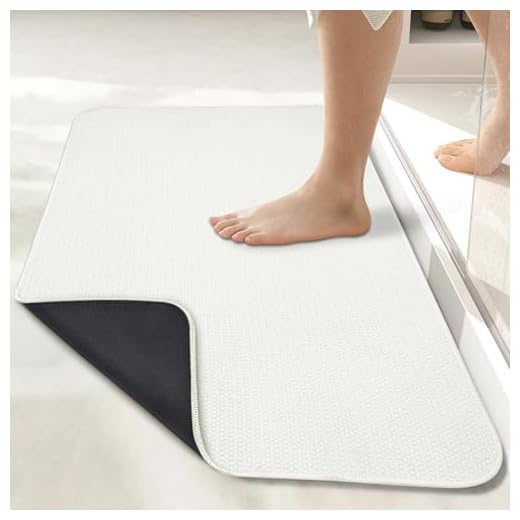
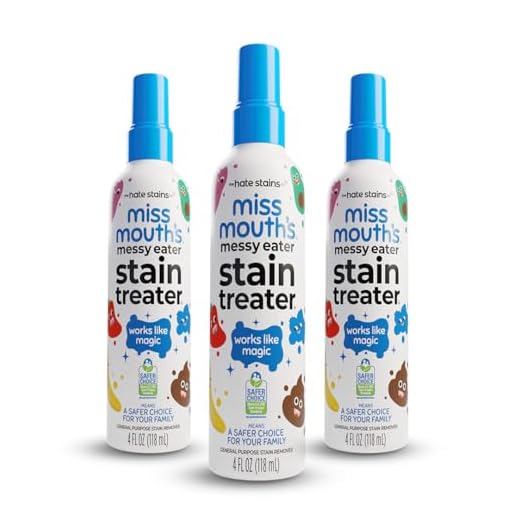
When it comes to maintaining a clean and hygienic bathroom, one often overlooked item is the bath mat. Many people underestimate the importance of keeping their bath mats clean, but the truth is that they can harbour a surprising amount of dirt and bacteria.
So, how often should you wash your bath mats? According to experts, it is recommended to wash your bath mats at least once a week. This will help to prevent the buildup of dirt, bacteria, and odours.
Regular washing is even more crucial if you have pets or young children in the house. Bath mats can easily become dirty and smelly from muddy paws or spills, so it’s important to maintain a regular cleaning routine to keep them fresh and hygienic.
But washing your bath mat is not just about hygiene. It also helps to extend the lifespan of the mat, keeping it in good condition for longer. So, don’t forget to toss your bath mats in the washing machine regularly, and enjoy a clean and fresh bathroom every time.
How Often Should You Wash Bath Mats?
When it comes to keeping your bathroom clean and hygienic, don’t forget about your bath mats. These seemingly innocent accessories can actually harbor a lot of dirt, bacteria, and moisture if not cleaned regularly. So, how often should you wash your bath mats? The answer depends on various factors, including usage, material, and personal preference.
Factors to Consider
- Usage: If you have a busy household with multiple people using the bathroom, your bath mats are likely to get dirty more quickly. In this case, regular washing is recommended.
- Material: The type of material your bath mat is made of can also affect how often it needs to be washed. Mats made of cotton or other absorbent materials should be washed more frequently, as they tend to hold onto moisture and bacteria. Mats made of synthetic materials may not require as frequent washing.
- Personal Preference: Some people have a higher tolerance for dirt or are less concerned about germs. If you fall into this category, you may be able to get away with washing your bath mats less often.
General Guidelines
As a general rule, it is recommended to wash your bath mats at least once every two weeks. However, if your mats are visibly dirty or have an unpleasant odor, you should wash them more frequently. Additionally, if you or someone in your household has a weakened immune system or is prone to infections, it is advisable to wash the mats more often to reduce the risk of spreading germs.
Washing Tips
When it’s time to wash your bath mats, follow these tips to ensure they come out clean and fresh:
- Check the care label on the mat for specific washing instructions. Some mats may be machine washable, while others may require hand washing.
- Use a mild detergent to avoid damaging the mat and to prevent any skin irritation.
- Wash the mats separately from other laundry items to prevent lint transfer.
- If using a washing machine, set it to a gentle cycle and use cold or warm water.
- Avoid using bleach or fabric softener, as these can damage the mat or reduce its absorbency.
- After washing, hang the bath mats to air dry or use a low-heat setting in the dryer.
By following these guidelines and regularly washing your bath mats, you can maintain a clean and hygienic bathroom environment for you and your family.
Understanding the Importance of Clean Bath Mats
A bath mat is an essential item in any bathroom. Its primary function is to absorb water and provide a safe and non-slip surface for you to step onto after a bath or shower. While bath mats are designed to prevent slips and falls, they can also become breeding grounds for bacteria, mold, and mildew if not cleaned regularly.
Bacteria Buildup
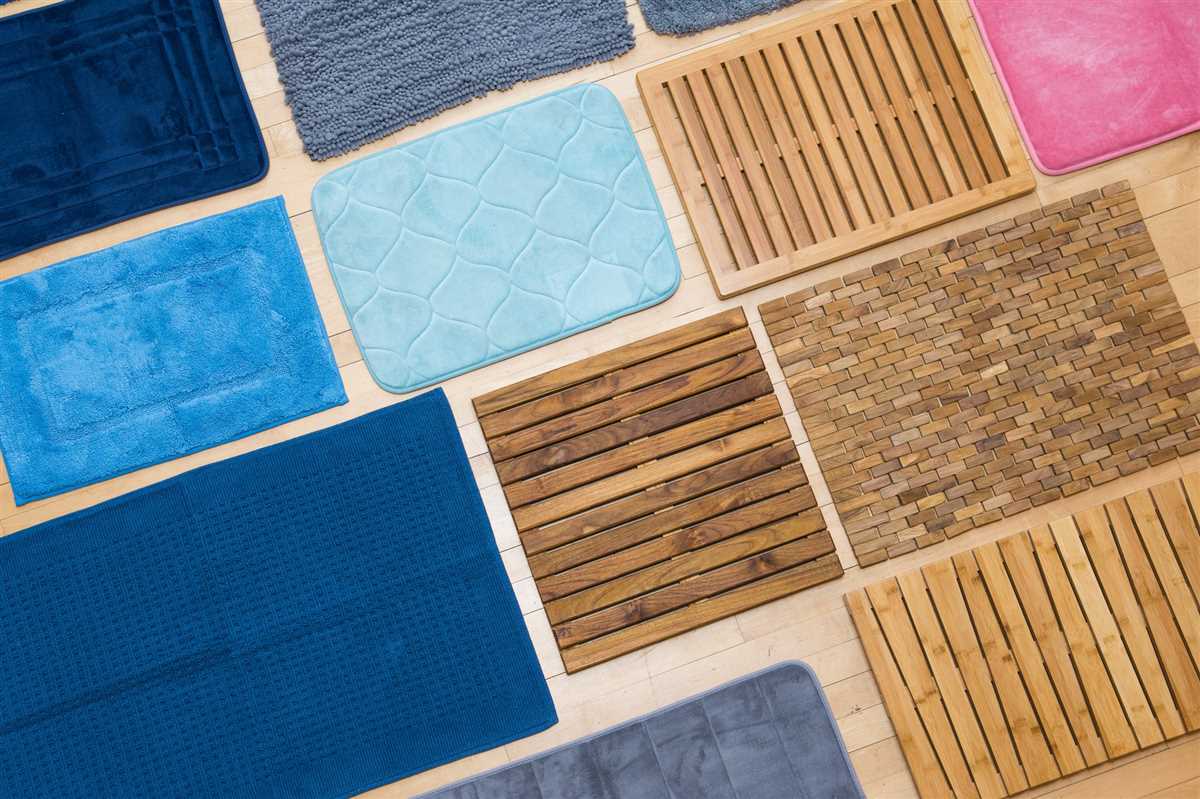
Moisture, warmth, and organic matter from your skin can create an ideal environment for bacteria to thrive on your bath mat. The bathroom is already a humid place, and the presence of damp bath mats can exacerbate the growth of harmful bacteria. These bacteria can cause skin infections, urinary tract infections, and other health issues if left unchecked.
Mold and Mildew Growth
Bath mats that are not properly cleaned and dried can also become a breeding ground for mold and mildew. These fungi thrive in moist environments and can cause respiratory problems, allergies, and even infections. The dark and damp underside of a bath mat provides the ideal conditions for mold and mildew spores to grow and spread.
Dirt and Odor Accumulation
Regular use of the bath mat can lead to the accumulation of dirt, hair, dead skin cells, and other debris. Over time, this can create an unsightly and unhygienic environment. Additionally, the dampness and lack of air circulation can cause unpleasant odors to develop, making your bathroom less inviting.
Preventing Health Issues
Regularly cleaning and maintaining your bath mat can help prevent the buildup of bacteria, mold, and mildew. It is recommended to wash your bath mat at least once a week, or more frequently if it gets visibly dirty. Always follow the care instructions provided by the manufacturer.
Proper Cleaning and Care
To keep your bath mat clean and hygienic, follow these tips:
- Shake out the bath mat after each use to remove excess water and debris.
- Machine wash the bath mat using hot water and a mild detergent.
- Avoid using bleach or harsh chemicals, as they can damage the bath mat.
- Hang the bath mat to dry completely before using it again.
- Consider using a bath mat with anti-microbial properties to reduce bacteria growth.
Conclusion
Keeping your bath mat clean is essential for maintaining a healthy and hygienic bathroom environment. Regular cleaning and proper care can help prevent the buildup of bacteria, mold, and mildew, ensuring that your bath mat remains a safe and inviting surface for you and your family.
Expert Advice on Bath Mat Cleaning Frequency
Introduction
Keeping your bath mat clean is important for maintaining proper hygiene in your bathroom. Bath mats are often exposed to moisture and can quickly become breeding grounds for bacteria, mold, and mildew if not cleaned regularly.
How often should you wash your bath mat?
The frequency of washing your bath mat depends on several factors, including how often it’s used, its location, and the material it’s made of. However, as a general rule of thumb, it’s recommended to wash your bath mat at least once a week.
Here are some scenarios that may require more frequent washing:
- If you have a large family and the bath mat gets heavy use on a daily basis, it may be necessary to wash it more often, like every few days.
- If your bathroom is prone to high humidity or moisture, it’s essential to wash your bath mat more frequently to prevent the growth of mold and mildew.
- If someone in your household has a contagious skin condition or an open wound, it’s crucial to wash the bath mat after every use to avoid spreading germs.
Tips for cleaning your bath mat
When cleaning your bath mat, follow these expert tips to ensure its longevity and effectiveness:
- Always check the care instructions provided by the manufacturer. Some bath mats may have specific washing instructions.
- Before washing, shake off any loose dirt or debris from the bath mat.
- For machine washable bath mats, use a gentle cycle with warm water and a mild detergent. Avoid using bleach or harsh chemicals as they can damage the mat.
- For non-machine washable bath mats, spot clean them as needed using a mild detergent and a soft brush or cloth.
- Dry your bath mat thoroughly after washing. Hang it up or lay it flat to air dry. Avoid direct sunlight, as it can cause fading and damage to the mat.
- Regularly inspect your bath mat for signs of wear and tear. Replace it if it’s damaged or worn out.
Conclusion
Regular cleaning of your bath mat is essential to maintain a clean and hygienic bathroom environment. Follow the expert advice on cleaning frequency and use proper cleaning techniques to ensure your bath mat stays fresh and free from germs.
Tips for Washing Bath Mats
1. Read the Care Instructions
Before washing your bath mat, it is important to read the care instructions provided by the manufacturer. Different materials and designs may have specific washing requirements that should be followed to ensure the longevity and quality of the mat.
2. Shake off Excess Dirt and Debris
Prior to washing, remove any excess dirt and debris from the bath mat by giving it a good shake. This will help to loosen and eliminate any loose particles that may be trapped in the mat fibers.
3. Check for Stains
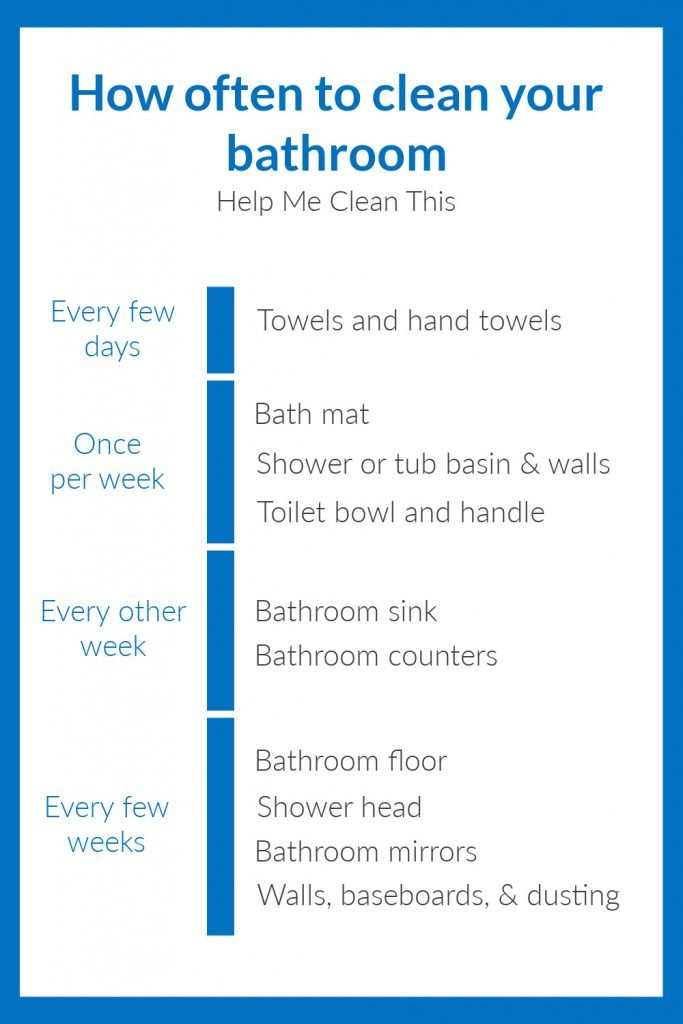
If you notice any stains on the bath mat, spot treat them before washing. Use a mild detergent or stain remover specifically designed for the material of your bath mat. Follow the instructions on the product and allow it to sit for the recommended amount of time before rinsing.
4. Use a Gentle Cycle
When washing your bath mat, choose a gentle cycle on your washing machine. This will help protect the mat from excessive agitation and prevent any damage to the fibers. Additionally, opt for cold or lukewarm water as hot water can cause shrinkage or fading.
5. Avoid Harsh Chemicals
Avoid using harsh chemicals, bleach, or fabric softeners when washing your bath mat. These products can break down the fibers and compromise the mat’s durability and absorbency. Stick to mild detergents specifically formulated for delicate fabrics.
6. Air Dry or Tumble Dry on Low
After washing, it is best to air dry your bath mat to maintain its shape and prevent any shrinkage. If you prefer to use a dryer, set it on a low heat or delicate cycle to avoid excessive heat that could damage the mat. Check the care instructions to ensure the mat is safe for machine drying.
7. Regular Cleaning Routine
To keep your bath mat clean and fresh, establish a regular cleaning routine. This can include shaking off any excess dirt and debris after each use or vacuuming the mat on a weekly basis. Regular maintenance will help prolong the lifespan of your bath mat and ensure a hygienic environment in your bathroom.
8. Replace When Necessary
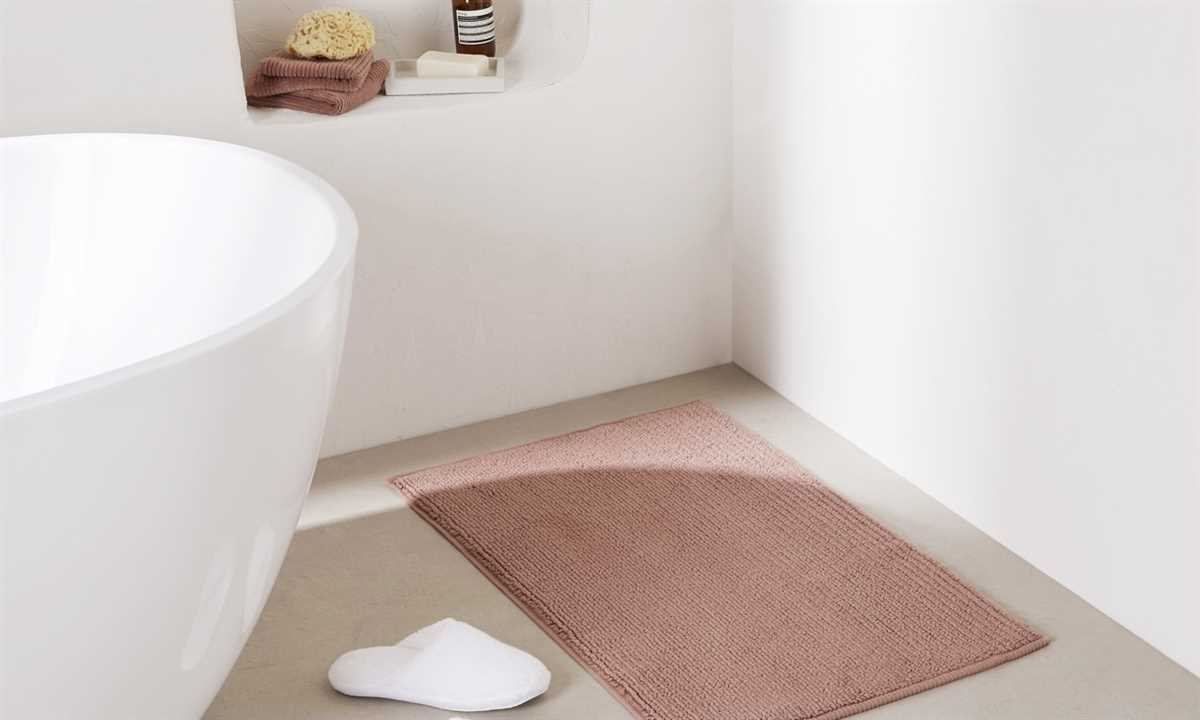
If your bath mat starts to show signs of wear and tear, it may be time to replace it. Over time, bath mats can lose their absorbency and become less effective in preventing slips and falls. Keep an eye out for frayed edges, thinning fibers, or an overall worn appearance.
By following these tips, you can maintain the cleanliness and quality of your bath mat, ensuring a safe and comfortable bathroom experience.
Signs that Your Bath Mat Needs Washing
- Unpleasant Odor: If you notice a foul smell coming from your bath mat, it’s a clear sign that it needs to be washed. Bath mats can trap moisture and bacteria, which can lead to the development of unpleasant odors.
- Visible Dirt and Stains: If you can see visible dirt, stains, or discolouration on your bath mat, it’s time for a wash. Regular use can cause dirt, dust, and grime to accumulate on the surface of the mat, giving it a dirty and unappealing appearance.
- Wet and Damp: If your bath mat feels constantly wet or damp, even after it has had time to dry, it’s a sign that it needs to be cleaned. Moisture can get trapped in the fibers of the mat, creating a breeding ground for mold and mildew.
- Allergies or Skin Irritation: If you or your family members notice an increase in allergies or skin irritation after using the bath mat, it may be a sign that it needs a thorough cleaning. Bacteria, mold, and allergens can build up on the surface of the mat, causing allergic reactions or skin irritation.
- Decreased Absorbency: If your bath mat is no longer absorbing water like it used to, it’s a sign that it needs a wash. Over time, soap residue and mineral deposits can build up on the mat, reducing its absorbency and effectiveness.
- Mold or Mildew Growth: If you notice any mold or mildew growth on your bath mat, it’s essential to wash it immediately. Mold and mildew can pose health risks and should not be ignored.
- Regular Maintenance: Even if you can’t see or smell any signs of dirt or bacteria, it’s a good idea to establish a regular washing routine for your bath mat. Regular cleaning can prevent the buildup of dirt, odors, and allergens.
FAQ
How often should you wash bath mats?
It is recommended to wash your bath mats at least once a week to prevent the buildup of bacteria and mold.
What is the best way to clean bath mats?
The best way to clean bath mats is to machine wash them on a gentle cycle with a mild detergent. You can also add a cup of vinegar to help remove odors and disinfect the mats.
Can you put bath mats in the dryer?
Yes, you can put bath mats in the dryer on a low heat setting. It’s important to make sure they are completely dry before using them again to prevent mold growth.
Are there any special cleaning tips for rubber bath mats?
If you have rubber bath mats, you can clean them by soaking them in a mixture of warm water and mild detergent. Scrub them with a brush, rinse thoroughly, and air dry them.
What should I do if my bath mats have stains?
If your bath mats have stains, you can pretreat the area with a stain remover before washing them. You can also try using a mixture of baking soda and water to create a paste and apply it to the stain, letting it sit for a few hours before washing.












